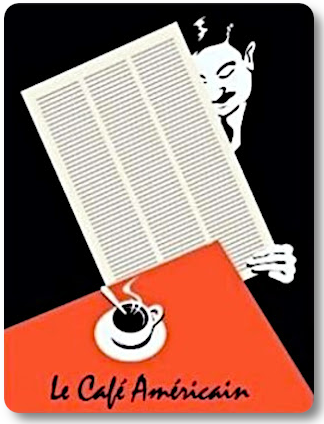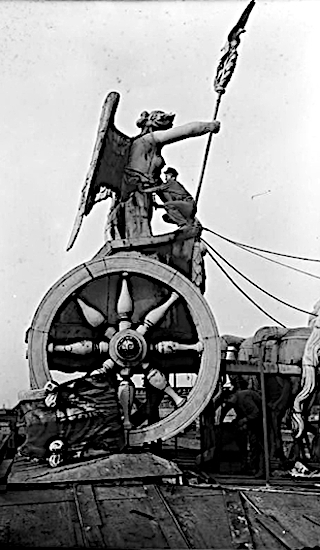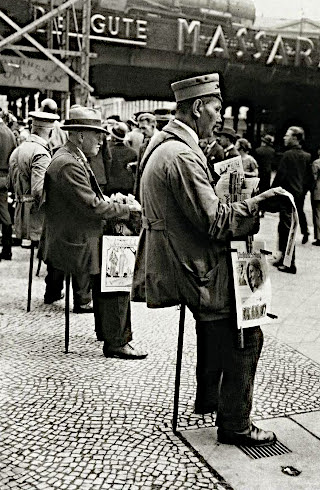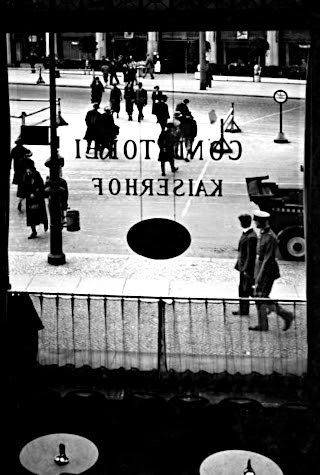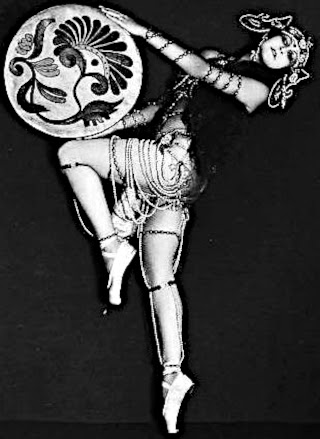It is essential to realize and remember that this is no accident, no unhappy confluence of disparate elements that just happened to come together.
This was a deliberate and methodical attempt to overturn long standing regulations and safeguards to recreate the banking conditions that helped to create the bubble economy of the 1920's.
The purpose was to allow the inordinate increase in wealth of a few greedy individuals driven by a rapacious will to power.
They did not care what havoc they wreaked on the rest of the world in the process. We have been here before when certain personality types have been able to hijack a society. Sometimes it is financial, at other times criminal, and too often political, with even an occasional coup d'etat.
Laws exist to protect society from the actions of aberrant personalities. It does not shock us when they wield a gun. Why then does it surprise us when they utilize a pen, a glib personal patina, a reckless disregard for others, and a persistent, amoral cunning?
The strength of the professional conman is that emotions do not cloud the force of their actions because they have long since ceased to listen to their conscience. And this is their weakness because, dulled by excess, their judgement allows them to go too far. Thereby they expose their unbridled greed and undermine their schemes, which operate best behind closed doors and under cover of darkness. Transparency and the light of exposure are their enemies.
Until there is reform and a restoration of justice there will be no sustained and genuine recovery.
PBS Frontline: The Long Demise of Glass-Steagall
Fear and Loathing in Financial Products
Banking on Steriods
By Satyajit Das
December 15, 2008
Earlier in 2008, CitiGroup announced that it was seeking Board members who had “expertise in finance and investments”. What was the experience and expertise of the Citi Board and senior management that has registered over US$50 billion in losses? Shareholders and taxpayers, that have provided over billions in new capital, will be hoping that the new recruits also possess “magic” to restore Citi’s fortunes. The same applies to the banking sector generally.
Until the late 1970s/ early 1980s, banking was highly regulated. It was the world of George Bailey (played by Jimmy Stewart) in It’s A Wonderful Life. Community banking was the rule. The banker could dip into his “honeymoon money” to stave of a potential bank run. It also fueled jokes - the “3-6-3” rule; borrow at 3%; lend at 6%; hit the golf course at 3 p.m.
Once de-regulated, banks evolved into complex organisations providing varied financial services. De-regulation brought benefits for the economy (better access to capital and more varied investment opportunities) and the banks (growth and higher profits).
Over the last 15 years, increased competition (within the industry and increasingly from non-banking institutions) and the reduction of earning from the commoditisation of products forced banks to rely on “voodoo banking” - performance enhancement to boost returns.
Traditionally banks made loans that tied up their capital for long periods e.g. up to 25/30 years in a mortgage. In the new “originate to distribute” model, banks “underwrote” the loan, “warehoused” it on balance sheet for a short time and then parceled them up with other loans and created securities that could be sold to investors (“securitisation”). The bank tied up capital for a short time (until the loans were sold off) and then the same capital could be reused and the process repeated. Interest earnings over the life of the loan could be discounted back and recognised immediately. Banks increased the “velocity of capital” – effectively sweating the same capital harder to increase returns.
In the traditional model, banks earned the net interest rate margin over the life of the loan – “annuity” income. When loan assets are sold off and the earnings recognised up-front, banks need to make new loans to be sold off to maintain earnings. This created pressure on banks to find “new” borrowers. Initially, creditworthy borrowers without access to credit in the regulated banking environment entered the market. Over time, banks were forced to “innovate” to maintain lending volumes.
Banks created substantial new markets for borrowing: ? Retail clients – expanding traditional lending (housing and car finance) and developing new credit facilities (credit cards and home equity loans). ? Private equity – providing borrowings in leveraged buyouts and sundry other highly leveraged transactions. ? Hedge funds/ private investors – providing (often) high levels of debt against the value of assets.
Banks increasingly also out sourced the origination of the loans to brokers, incentivised by large “upfront” fees.
The expansion in debt provision relied increasingly on quantitative models for assessing risk. It also relied on collateral - the borrower put up a portion of the price of the asset and agreed to cover any fall in value with additional cash cover.
The model allowed banks to expand the quantum of loans and allowed extension of credit to lower rated borrowers. Banks did not plan to hold the loan long term and were only exposed to “underwriting” risk in the period before the loans were sold off. Where the loan was collateralised, the value of the asset and the agreement to “top up” the collateral where the asset value fell was considered to provide ample protection.
Favorable regulatory rules (the capital required was modest), optimistic views of market liquidity and faith in models underpinned this growth in lending.
Banks also increased their trading activities, especially in derivatives and other financial products. Initially, this was targeted at companies and investors seeking to manage financial risk. Over time it increasingly focused on creating risk allowing investors to increase returns and companies to lower borrowing costs or improve currency rates. As profits margins eroded, banks created ever more complex exotic products, usually incorporating derivatives. Derivatives also increasingly became a way to provide additional leverage to customers.
The development of hedge funds was especially important. They borrowed money (against securities offered as collateral) and were extensive users of derivatives. They also traded frequently and aggressively boosting volumes. Prime broking services (bundling settlement, clearing, financial and capital raising) emerged as a major source of earnings for some banks.
Banks also increased their own risk taking. Traditionally, banks took little or no risk other than credit risk. Over time, banks increasingly assumed market risk and investment risk. Originally, banks traded financial products primarily as “agents” standing between two closely matched counterparties. Over time banks became principals in order to provide clients with better, more immediate execution and also increase profit margins. (This is the model that existed in 1929 and which was prohibited by Glass-Steagall which the banks worked tirelessly to overturn led by Sandy Weill of Citigroup at the head of an army of lobbyists according to the PBS documentary. There were similar operation in the 1920's although the history has been painted over and buried more thoroughly over time - Jesse)
Increased risk taking was also dictated by business contingencies. Advisory mandates (mergers and acquisition; corporate finance work) were conditional on extension of credit. Banks increasingly “seeded” or invested in hedge funds to gain preferential access to business.
Clients often sought “alignment” of interests requiring banks to take risk positions in transactions. This evolved into the “principal” business as banks increasingly made high risk investment in transactions. In some banks, this evolved into a model where the bank acted purely as “principal” rolling back the clock to the days of J.P. Morgan. Banks convinced themselves of the strategy on the basis that the risks were acceptable (it was their deal after all!), the risk could be always sold off at a price (market were liquid) and (the real reason) high returns.
Enhanced revenues (growing volumes and increasing risk) were augmented by increased leverage and adroit capital management. “Regulatory arbitrage” evolved into a business model. Required risk capital was reduced by creating the “shadow” banking system – a complex network of off balance sheet vehicle and hedge funds. Risk was transferred into the “unregulated” shadow banking system. The strategies exploited bank capital rules. Some or all of the real risk remained indirectly with the originating bank.
Banks reduced “real” equity – common shares – by substituting creative hybrid capital instruments that reduced the cost of capital. The structures generally used high income to attract investors, especially retail investors, while disguising the (less obvious) equity price risk. In some cases, banks used these new forms of capital to repurchase shares to boost returns. For example, CitiGroup repurchased US$12.8 billion of its shares in 2005 and an additional US$7 billion in 2006.
Banks increasingly “hollowed out” capital and liquidity reserves – that is, they reduced these to minimum levels. Concepts of “purchased” capital and “purchased” liquidity gained in popularity. The theory was that banks did not need to hold equity and cash buffers as these items could always be purchased in the market at a price.
Bank profits in recent history were driven by rapid and large growth in lending, trading revenues and increased risk taking. Banking returns were underwritten by an extremely favourable economic environment (a long period of relatively uninterrupted expansion, low inflation, low interest rates and the “dividends” from the end of communism and growth in international trade). (The cooperation of the Federal Reserve in the person of Alan Greenspan was integral and essential. He was somehow persuaded into relinquishing his fiduciary responsibilities - Jesse)
Bankers would argue that the source of higher returns was “innovation”. John Kenneth Galbraith, in A Short History of Financial Euphoria, noted that: “ Financial operations do not lend themselves to innovation. What is recurrently so described and celebrated is, without exception, a small variation on an established design . . . The world of finance hails the invention of the wheel over and over again, often in a slightly more unstable version.” (This was no accident, a small knot of bankers with a good understanding of financial history hijacked the US financial system and the real economy to enrich themselves, fabulously, beyond all normal human need - Jesse)
Elite athletes often use performance enhancement drugs to boost performance. Voodoo banking operated similarly enabling banks to enhance short-term performance whilst risking longer-term damage.
Satyajit Das is a risk consultant and author of Traders, Guns & Money: Knowns and Unknowns in the Dazzling World of Derivatives (2006, FT-Prentice Hall).





